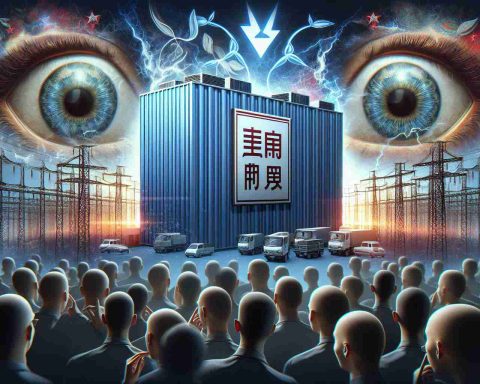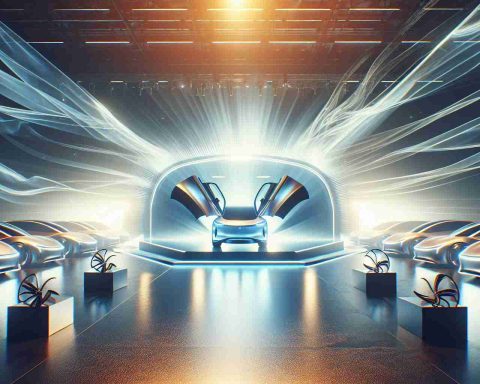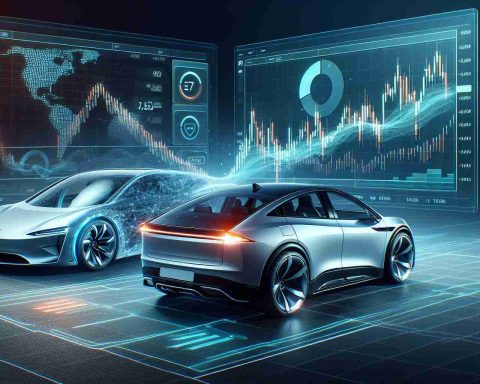In a decisive act upon returning to the White House, President Donald Trump has targeted electric vehicles (EVs) and the policies supporting them. His executive order titled “Unleashing American Energy” is primarily designed to dismantle what he refers to as a federal “EV mandate.” The aim is to enhance consumer choice by eliminating regulatory obstacles that he believes hinder economic progress.
However, obstacles await. Experts emphasize that fully reversing the Inflation Reduction Act and its incentives for EVs would require congressional action. The same applies to scrapping the U.S. Environmental Protection Agency’s emissions regulations, which are key to promoting EV growth. Even as efforts to pause funding for EV charging infrastructure are underway, this leaves substantial potential impacts on the expanding EV charging network. Major players like Tesla could find themselves affected, particularly as this funding had been previously allocated through initiatives set in motion by the Biden administration.
Moreover, Trump’s stance invites pushback from lawmakers within the Republican Party who represent regions benefiting from large-scale EV investments, notably in states like Georgia, where Hyundai is constructing a massive facility. Although Trump focuses on eliminating “unfair subsidies,” many industry stakeholders warn that diminishing support for EVs could ultimately hinder the U.S. auto industry’s global competitiveness, especially against markets like Europe and China, where EVs are rapidly gaining popularity.
Examining the Broader Implications of Trump’s EV Directive
The implications of President Trump’s recent executive order targeting electric vehicles extend far beyond the immediate realm of automotive policy. The potential shift in U.S. energy strategy could have profound ripple effects on society and the economy. As major cities worldwide increasingly focus on reducing carbon footprints, the United States risks falling behind in the global race toward sustainable energy solutions.
Culturally, the move reflects a significant pivot away from the growing public enthusiasm for EVs, which have gained traction as environmentally friendly alternatives. A reversal of support could dampen consumer interest, especially among younger generations who prioritize eco-conscious choices in their purchasing decisions. This shift could lead to a broader societal trend of decreased engagement with green technologies.
From an economic perspective, cutting funding for EV infrastructure may hinder job creation in a sector that has shown robust growth in recent years. The Bureau of Labor Statistics reports that jobs in battery manufacturing are projected to rise significantly, magnifying the stakes for local economies tied to the EV industry. Additionally, global supply chains critical to EV production, often reliant on sustainable practices, could be jeopardized.
Environmental concerns also loom large. The push against EV incentives may exacerbate climate change, with reduced investment in cleaner technologies potentially leading to increased fossil fuel reliance. As climate scientists warn of escalating environmental crises, the failure to bolster EV adoption could have dire long-term consequences for air quality and public health.
As industry stakeholders voice concern, the tension between political agendas and grassroots innovation becomes palpably clear. The long-term significance of these policies could shape not only the automotive landscape but also the U.S.’s position as a leader in the global energy transition.
Will Trump’s Return to Power Impact the Future of Electric Vehicles?
President Trump’s Move Against Electric Vehicles
Recent developments surrounding electric vehicles (EVs) have sparked considerable debate, especially with former President Donald Trump’s return to the White House. His new executive order, titled “Unleashing American Energy,” seeks to dismantle federal policies that promote electric vehicles, claiming that these regulations stifle consumer choice and economic growth.
Key Features of the Executive Order
1. Aims to Revoke EV Mandates: The order focuses on eliminating what Trump characterizes as a federal “EV mandate,” seeking to roll back legislation put in place under the previous administration that aimed to bolster electric vehicle adoption through incentives and regulations.
2. Potential Economic Impacts: Trump’s initiative is positioned as a means to improve consumer freedom, but experts caution that it may also have significant negative implications for the automotive industry, particularly on the U.S.’s competitiveness in the global market.
3. Congressional Hurdles: The reversal of the Inflation Reduction Act, which includes tax incentives for electric vehicle purchases, would require congressional action. This presents a significant obstacle, as bipartisan support for EVs exists in various regions, especially those experiencing substantial investments in EV manufacturing.
Industry Reactions and Controversies
The response from lawmakers and industry stakeholders indicates that the proposed changes may not receive unanimous support. Key players in the Republican Party, especially those representing states like Georgia—where substantial investments in EV manufacturing are underway—express concerns about the potential negative impact on local economies.
– Support for EV Infrastructure: Despite Trump’s attempts to pause funding for EV infrastructure, stakeholders emphasize that the development of a robust charging network is crucial for the viability of electric vehicles. This pushback highlights a growing recognition of the need for a balanced approach to energy policy that incorporates both traditional and renewable energy sources.
Compatibility with Market Trends
The shift towards electric vehicles is witnessing accelerated interest globally. In markets like Europe and China, there is a significant push towards EV adoption, often fueled by supportive government policies. As such, reducing U.S. federal backing for EVs could place American automotive manufacturers at a strategic disadvantage.
Limitations and Challenges Ahead
– Scrapping Emission Regulations: The U.S. Environmental Protection Agency’s emissions standards are key instruments for encouraging EV adoption. Repealing these standards could stall progress towards significant reductions in greenhouse gas emissions, contradicting broader climate goals.
– Global Competitiveness: With countries around the world making substantial investments in EV technology and infrastructure, there is an urgent need for the U.S. to remain competitive in this rapidly evolving market. Reducing support for EVs could compromise the innovations necessary for the automotive industry to thrive in the future.
Predictions for the Future of EVs in America
– Sustained Demand: Market analysts predict that despite political fluctuations, consumer demand for electric vehicles will continue to grow, largely driven by decreasing battery costs and increasing environmental awareness among consumers.
– Investment Trends: As companies like Tesla and traditional automakers pivot towards electric vehicle manufacturing, significant investments in technology and infrastructure will likely shape the industry over the next decade.
In conclusion, while President Trump’s executive order reflects a broader commentary on regulatory policies, the implications for electric vehicles and the automotive industry could be far-reaching and complex. Stakeholders will need to navigate these changes carefully to ensure that the U.S. remains a leader in the global shift towards sustainable transportation.
For more insights into the evolving landscape of electric vehicles, visit Electric Vehicles.







